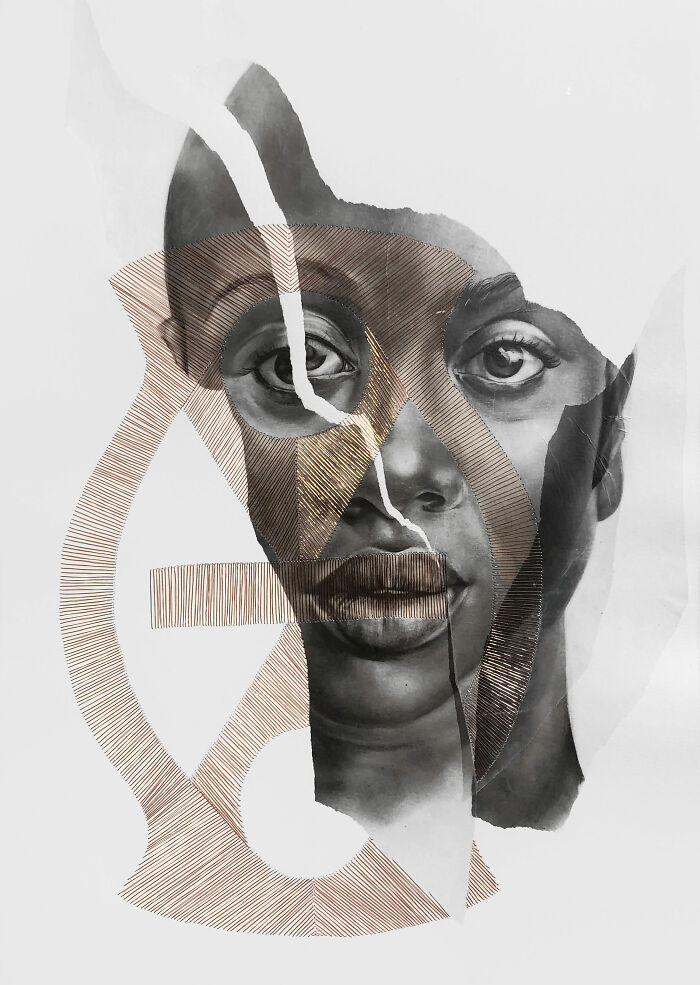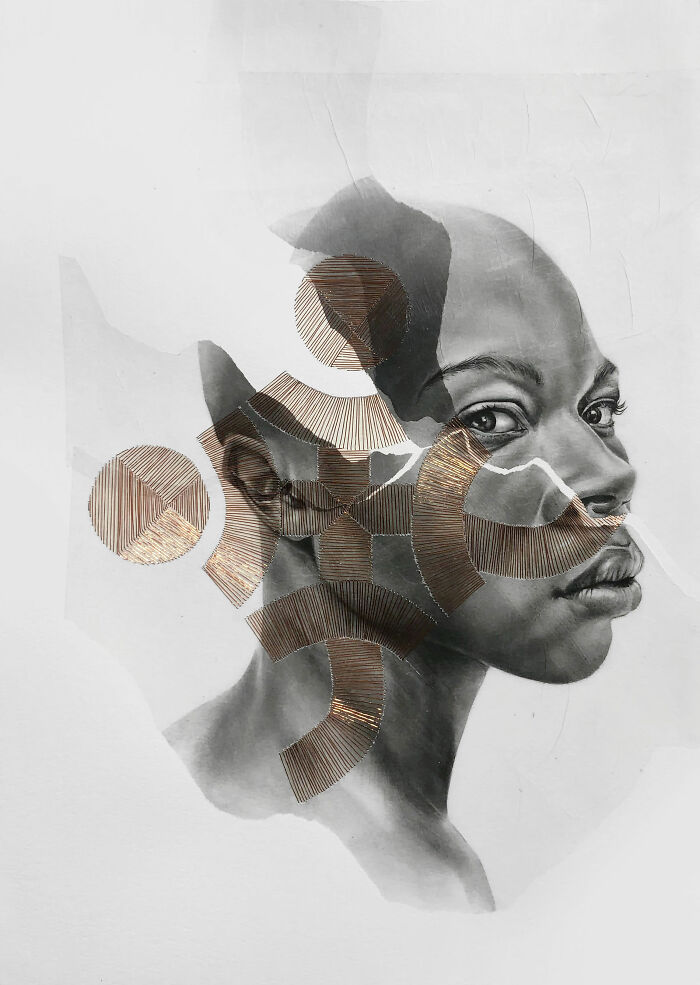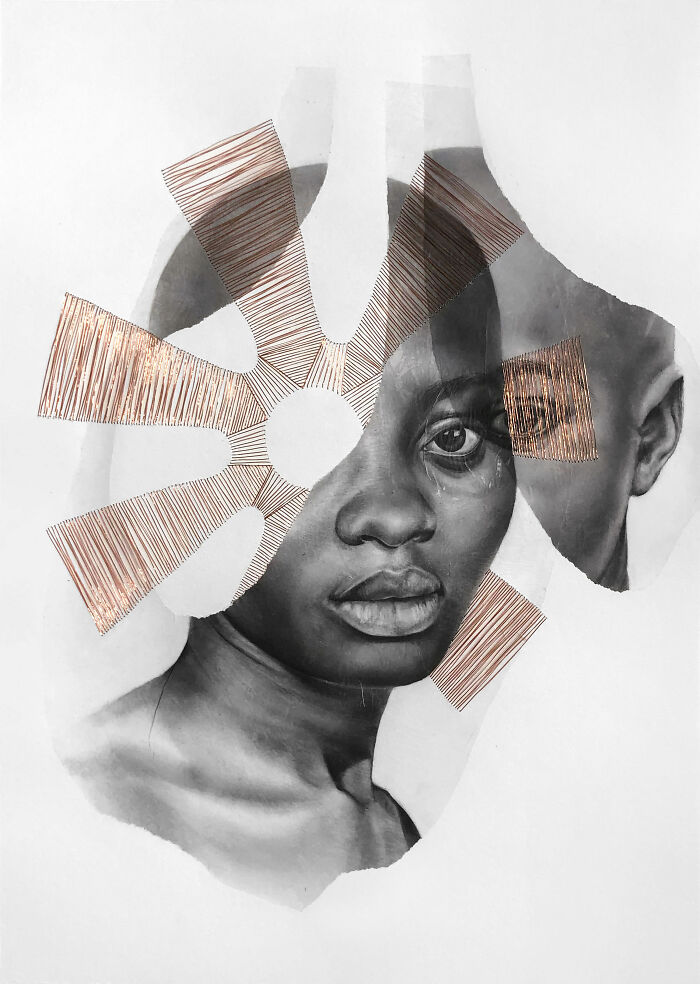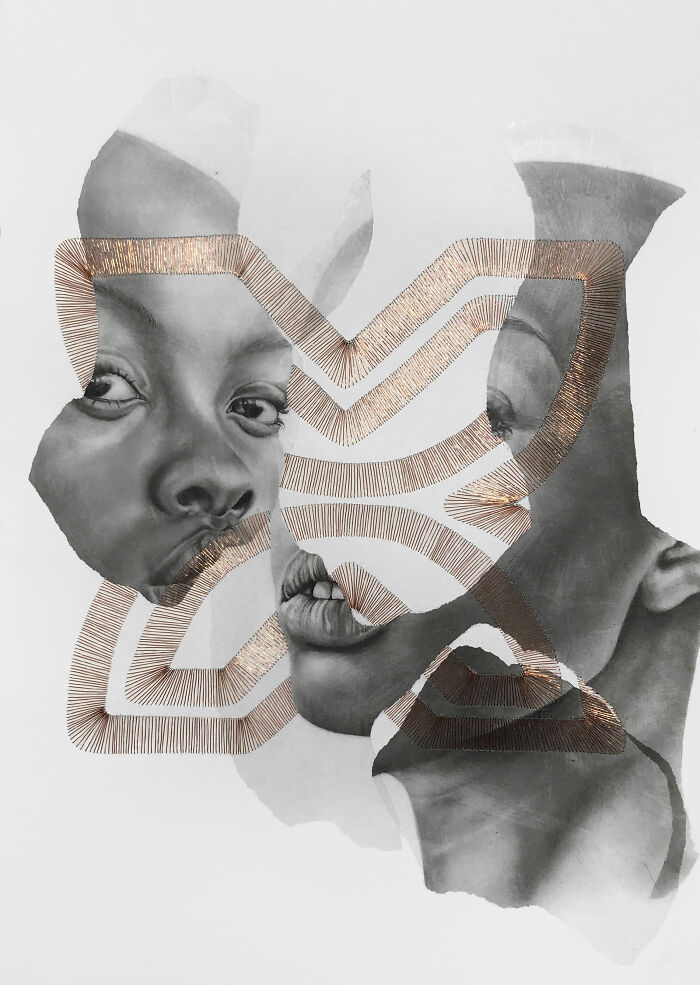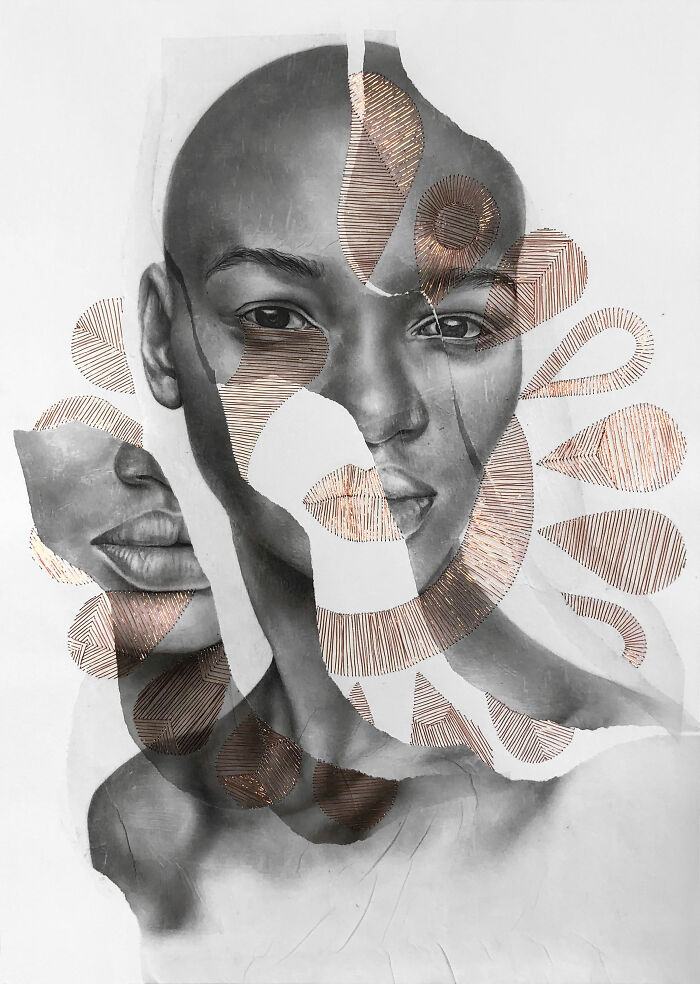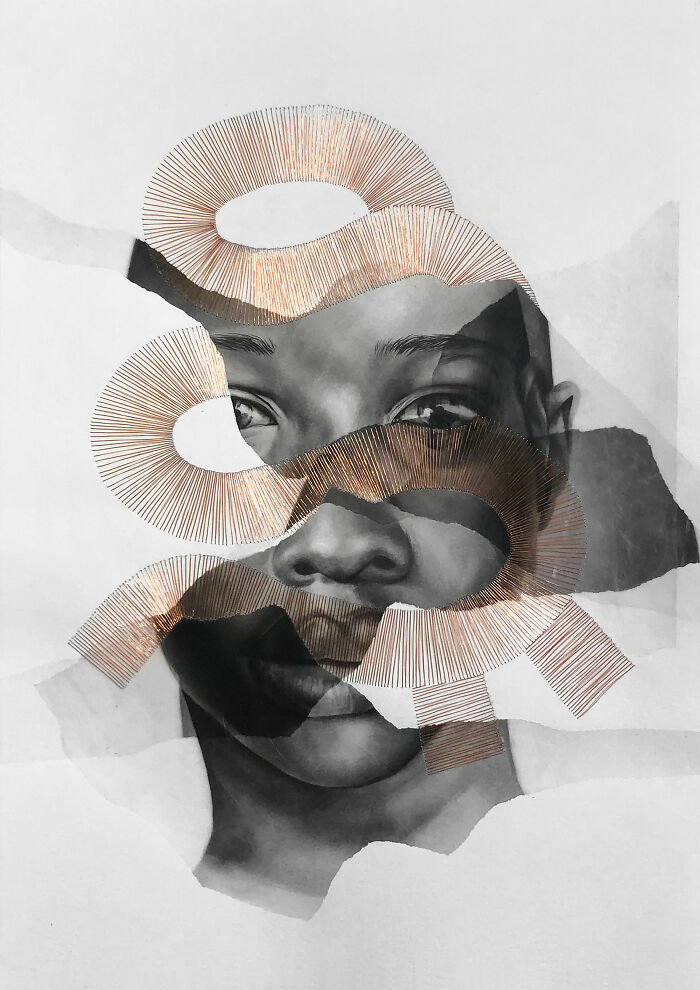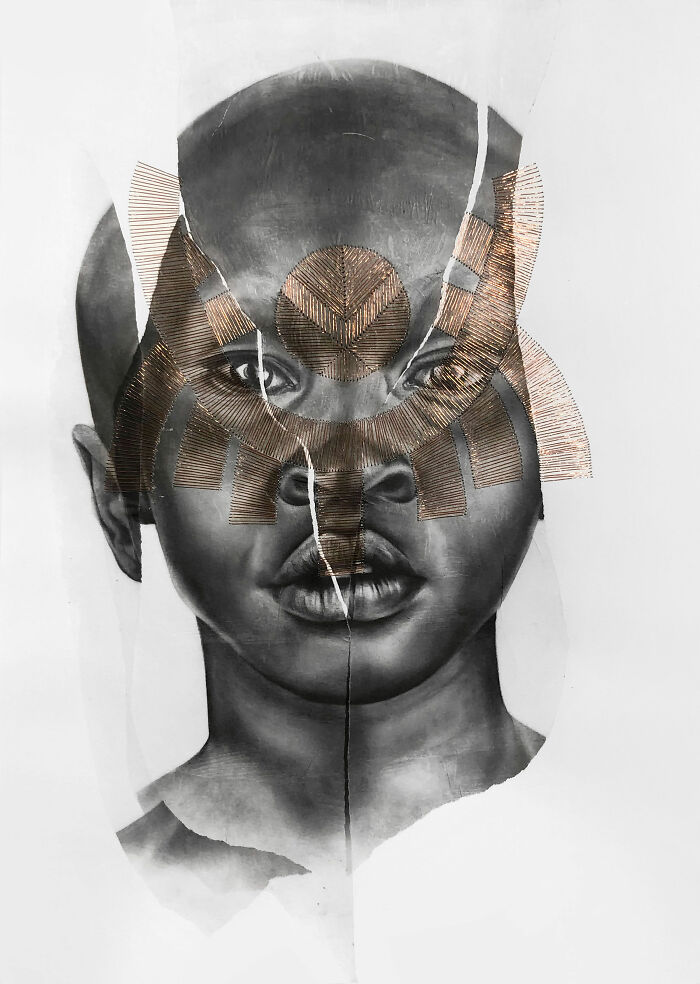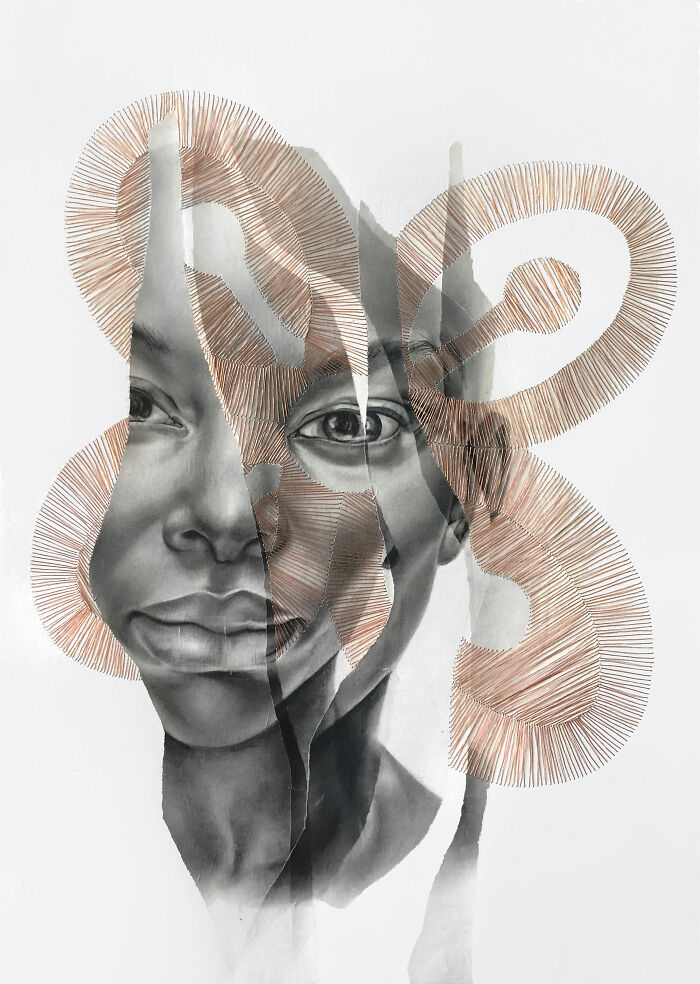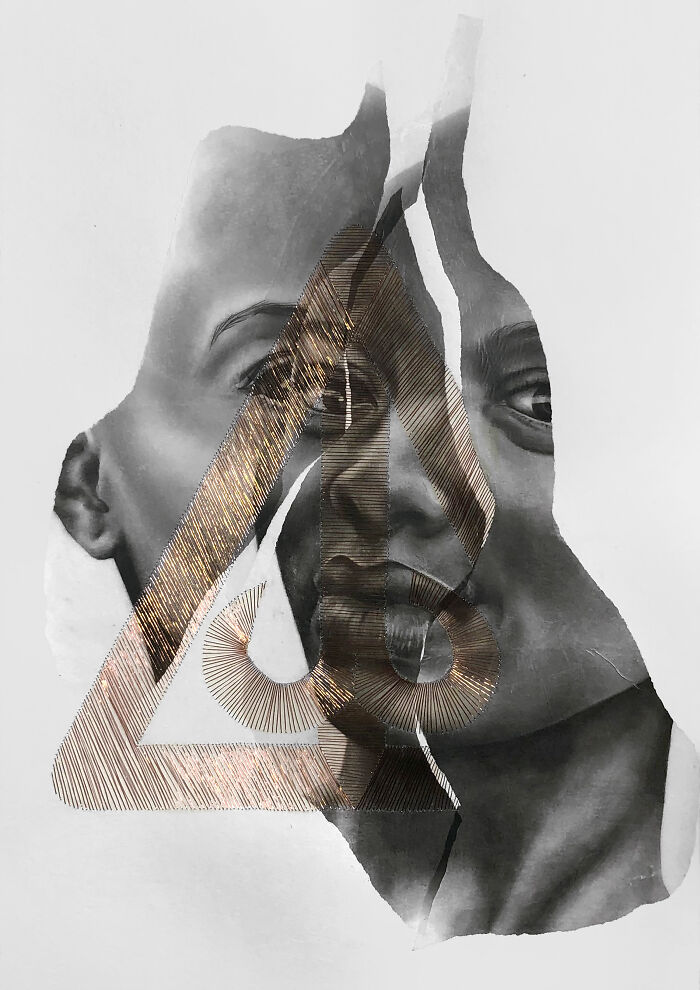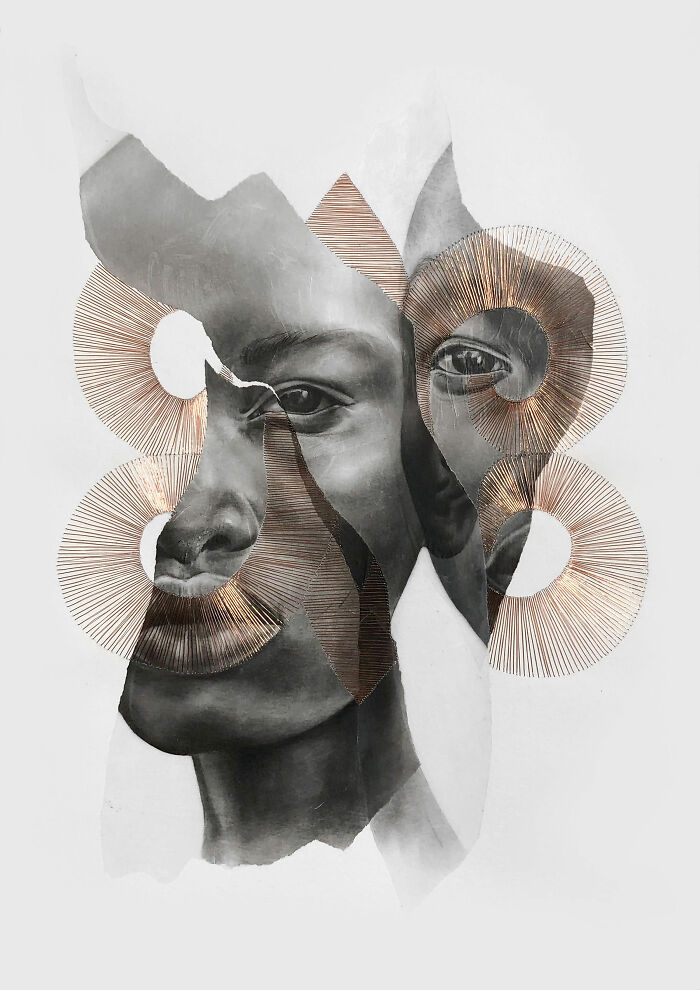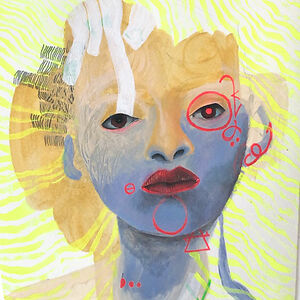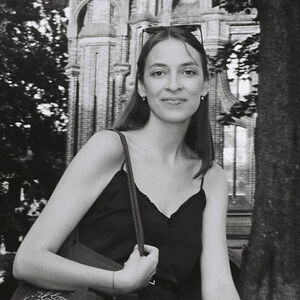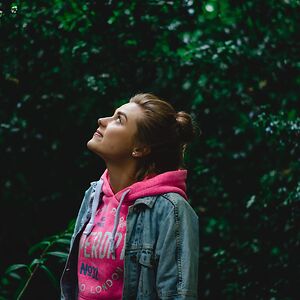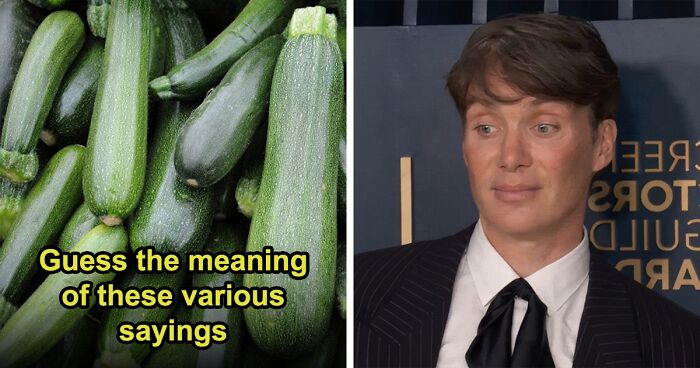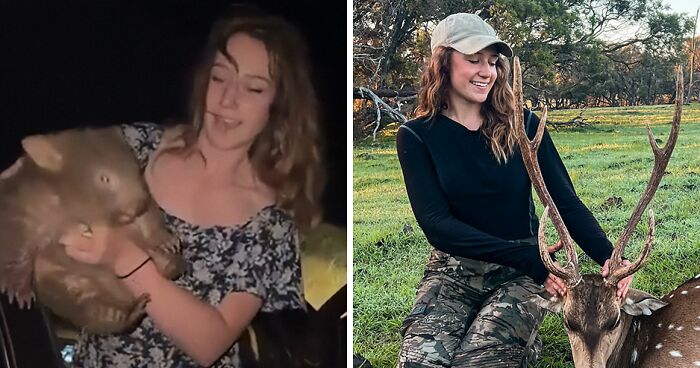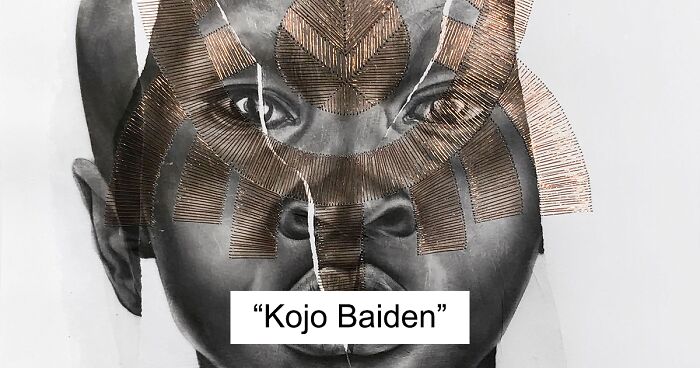
3Kviews
10 Stunning Portraits Pieced Together With Intricate Copper Thread Stitching By Mariana San Martin
Interview With ArtistMariana San Martin is a Brazilian artist based in Rio de Janeiro who is fascinated by the human figure. She often deconstructs her portraits to create beautiful interactions between abstract forms and human faces. Her latest work is a series of torn portraits that were put back together amidst intricate copper thread stitching. Each art piece took around 18 hours to sew and is based on a different symbol from the Adinkra system.
Adinkras are symbols created by the Ashanti people, part of the Akans from western Africa. Each symbol in this system carries its people’s wisdom and expresses values and traditions. Originally used in farewell ceremonies, the Adinkra symbols spread throughout the world and are now part of our architecture, clothes, and objects. The intentions they carry remain, though, and spread with them.
This series, called Amuletos (Amulets in Portugues) is a realization of many intentions stitched in copper. Copper is a very conductive metal and was the first one to be used intentionally by humans. Sewing Adinkras with copper evokes our ancestry, the need to tell stories with symbols and to pass down wisdom. Each amulet emanates the wishes and knowledge its symbol conveys and the hope that we will let the good wishes they carry be part of our lives.
More info: marianasanmartin.com | youtube.com | Instagram
This post may include affiliate links.
Mmere Dane
From the Twi proverb “Mmere dane, dane”, which literally translates to “time changes, changes”. Life is like a flowing river, it can’t exist without constant change. We have to learn how to accept the natural flow of life so that our souls can be one with the whole.
I really REALLY don’t understand how people have this level of talent
The artist shared, "it felt important to look for a lasting material, something that evoked ancestry, that conveyed the idea of passing something down, of spreading, protecting and I found all those sentiments in copper. Stitching is often related to caring, hand-making, and slowly building and in this collection it allowed me to forge a relationship with each piece as I spent many hours carefully passing copper fine threads through tiny holes on the paper, stretching, smoothing, and trying not to break them. I feel ancient wisdom is like that, it’s slowly built, it’s to be passed, and it means to take care of people by advising, by sharing experience, it’s a thread that follows many lifetimes and relies on relationships not to be broken."
Funtunfunefu Dua
Translating literally to Siamese crocodiles, this symbol reminds us of the importance of tolerance and cooperation. Normally independent, the crocodiles are forced to coexist and unite in order to survive and for that have become a symbol that represents unity among different religions and cultures.
Ananse
Ananse Ntontan translates to "spider's web". Ananse is a very well-known character from African folktales. It was him, half man, half spider, who brought from the skies to Earth all the tales and stories. For that, he is the symbol of creativity, wisdom and the complexity of life.
Ananse stories are really cool! I was raised on an international fruit salad of fairytales.
Asked what initially drew Mariana to exploring the human figure in her artwork, the artist shared: “I’ve been drawing female figures since I was a little kid, all the adults around me used to say I was going to grow up to be a fashion designer because I simply loved making up outfits and poses in my drawings. I ended up graduating as a graphic designer and I moved away from my family to Rio de Janeiro. My first year here was kind of lonely and meant adapting a lot since there are many cultural differences between here and where I come from, a much smaller city in the South of Brazil.”
Fawohodie
From the proverb “Fawodhodie ene obre na enam”, meaning “independence comes with its responsibilities”. This Adinkra is a symbol of freedom and independence and reminds us those are things that should always be used with wisdom.
Mako
Translating simply as "pepper", the word mako forms part of the proverb "All peppers do not ripen at the same time". Mako tells us that every person has their own time in learning and growing and gently reminds us that no situation is permanent. We must always lend a hand to those in need for the world is an ever-turning wheel and our place in it is ever-changing.
San Martin continued: “Drawing became kind of a therapy for most of my free time and being away from everybody I knew drove my attention to all the new and different people and behaviors around me. I started wondering why I felt so misplaced, they were all people just like me after all, it shouldn’t feel so unfamiliar. That led to thinking about the role of culture and environment in our lives and personalities and about how all the choices
I was making and experiences I was having were affecting deeply and permanently who I was becoming. I become a lot more interested in the human part of my drawings instead of their outfits. My figures, then, lost their clothes and hair and started to interact with abstract forms and colors. I began to see the faces and bodies I drew and painted as containers to much more than their looks.”
Nkyinkyim
From the verb “Kyim” which means to twist, this Adinkra represents knowing how to adapt through the tortuous paths that make life’s journeys.
This one looks kind of like pencil shavings. I like it.
Kojo Baiden
Kojo Baiden means nothing less than the universe and its omnipresence. It's a protective symbol that embodies the idea of us, everyone and everything being connected. This relates to our intuition, if we are all one then everything and anything can be found inside of us, we just have to look for it.
The torn portraits in the artist’s series involve a unique process of deconstruction and reconstruction. We were wondering if Mariana could tell us more about the inspiration behind this technique and its significance in her artistic journey. We learned that: “As I started looking to the inner worlds of people and got more interested in how our personal and collective realities affect one another, I got to this idea that we are made of many layers of instants and experiences. Tearing my drawings is, for me, a way of mimicking the process of living. We start like this pristine image of ourselves and as we allow ourselves to live, we discover different configurations and possibilities of existing, we are marked by emotions, by experiences, we become more complex and colorful, we become an intricate and unique story.
The Amuletos series explore these ideas through stitching with copper. In other works and series, I do the same with paint, fabric, carving and really any other materials that make sense at the time. It’s important for me to work with materials and techniques that relate to the story I’m telling and add to that narrative.”
Bese Saka
Bese Saka means "a sack of cola nuts". Cola nuts grow spontaneously in Western Africa and are said to have healing qualities being used to treat from anemia to migraines and heart illnesses. Their important role in the economic life of Ghana made them a symbol of abundance, prosperity and unity.
Awurade-Baatanfo
Meaning “God, the mother”, this Adinkra carries a feminine energy that translates into protection, nurturing and caring.
Mariana described ancient wisdom as a thread passing through many lifetimes. Asked how her artwork contributes to this thread, and what role she sees art playing in preserving and passing down wisdom, the artist said: “I feel we’ve been, as a collective, so disconnected from our history and ancestry. Western culture praises standing out as the ultimate success and that, most times, means ignoring completely the fact that nobody at all starts from zero and nobody at all goes anywhere alone. We are a social species, we need each other, we need to share knowledge and experience and being able to do that is exactly what makes us so special.
I feel that using art to tell stories of beliefs and wisdom from many different cultures and times makes palpable that the humanity each one of us carries is the same as everyone else’s. Art is a beautiful way of recognizing ourselves outside of ourselves. Art is, for me, a way in as much as a way out, and allows us to realize that in and out are just the one same way.”
Hye Won Hye
From the proverb “Hye wonhye” or “Burn you won ́t burn”, this Adinkra gets its meaning from the old practice of walking on fire without burning one's feet. It is a symbol of overcoming difficulties and enduring the wrongs in our lives.
Amuletos Studio
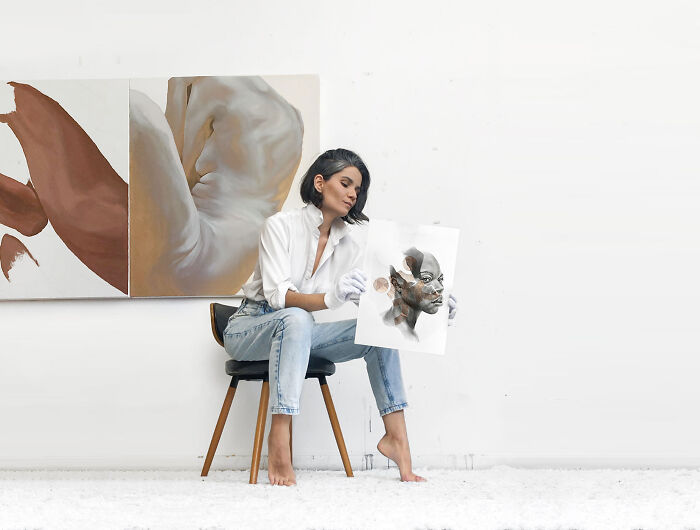
Such an amazing concept. Thank you for providing the glossary of the symbols meanings.
these are literally some of the most beautiful artworks I've seen in a while
Such an amazing concept. Thank you for providing the glossary of the symbols meanings.
these are literally some of the most beautiful artworks I've seen in a while

 Dark Mode
Dark Mode 

 No fees, cancel anytime
No fees, cancel anytime 



